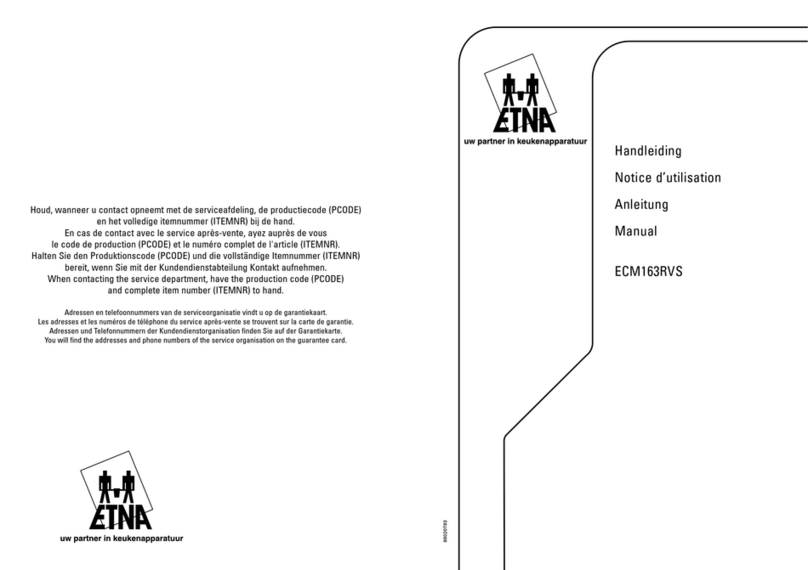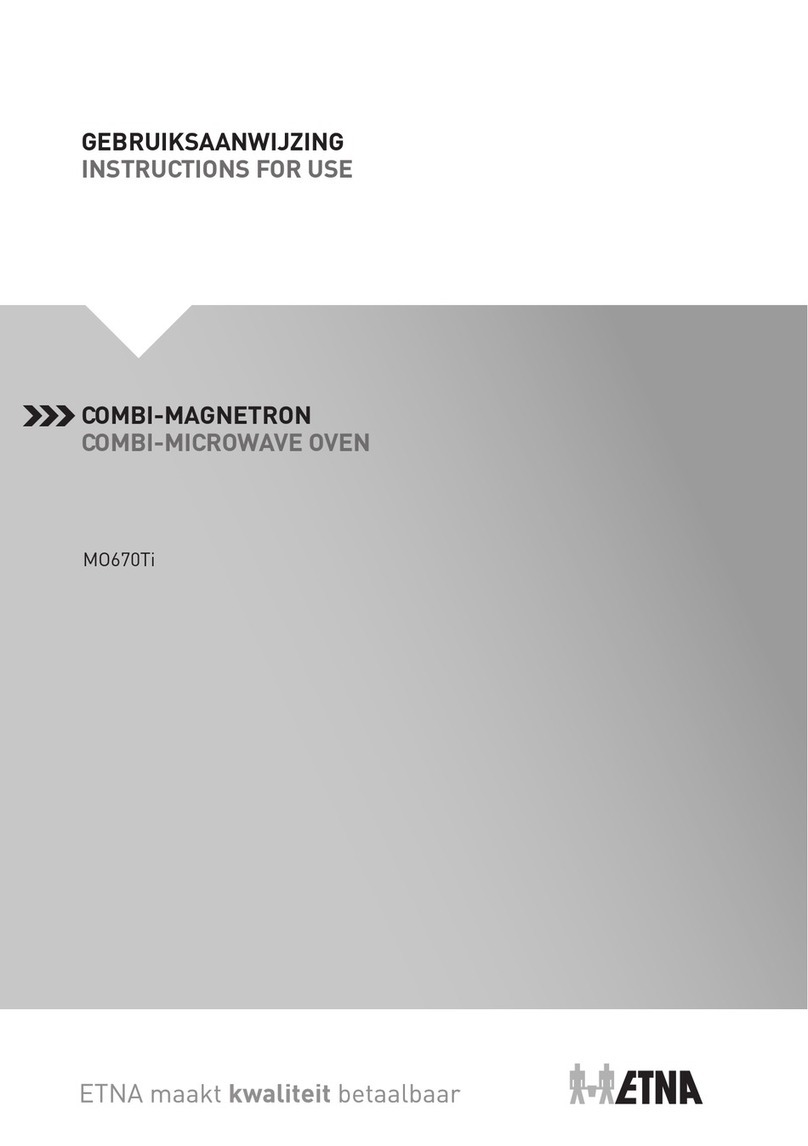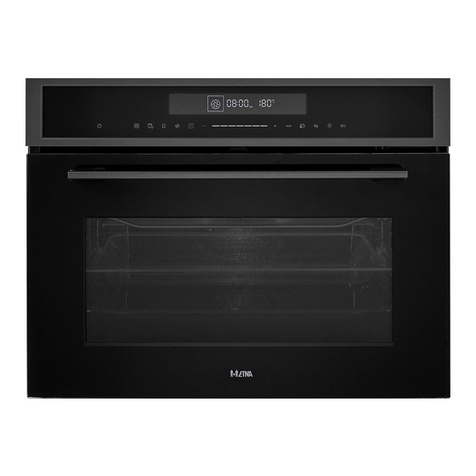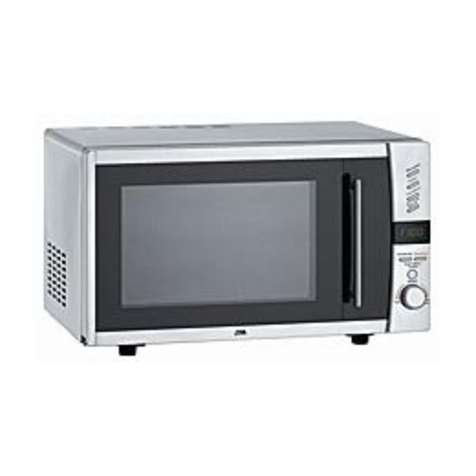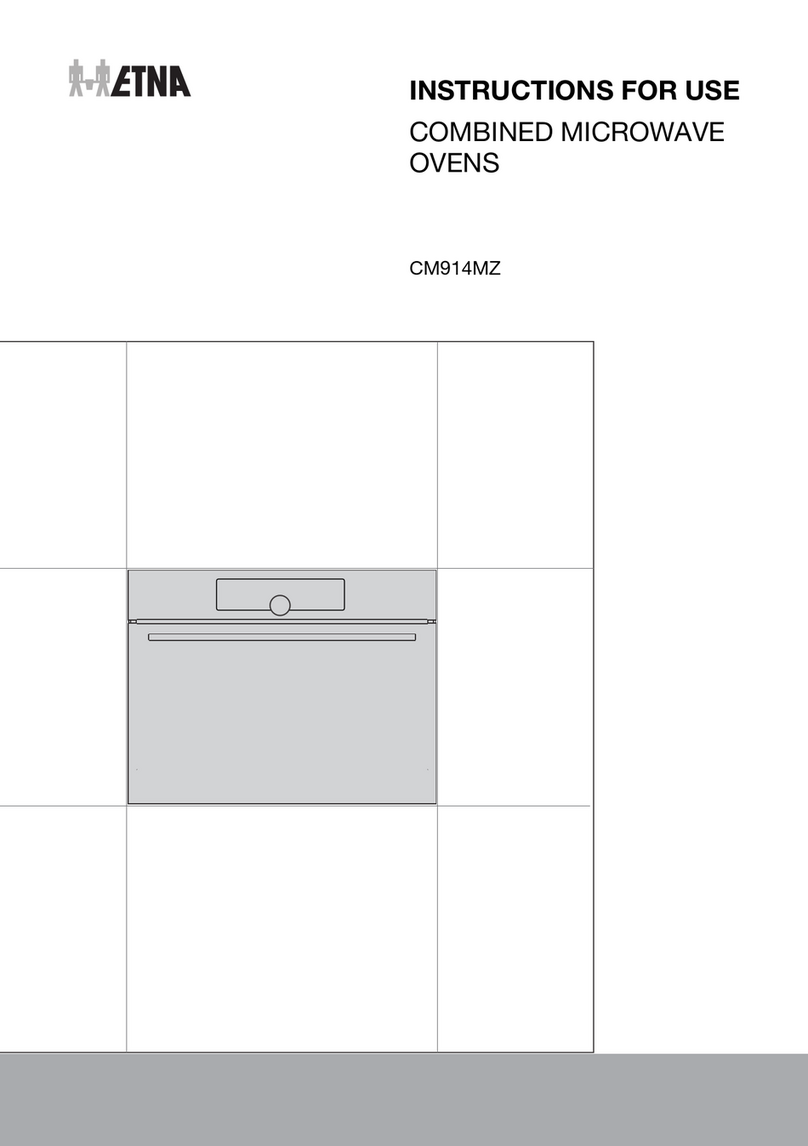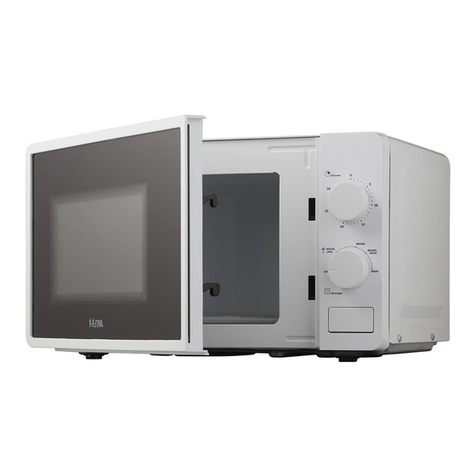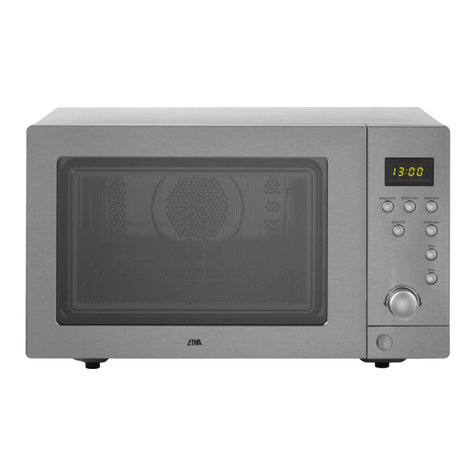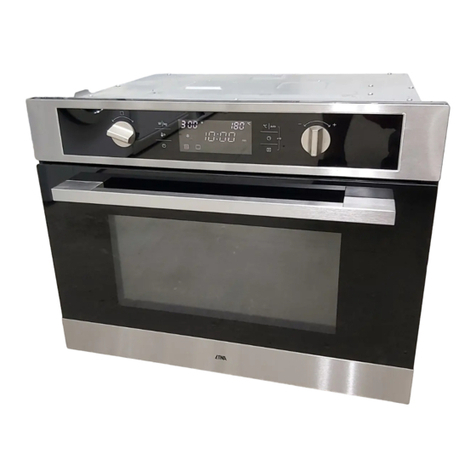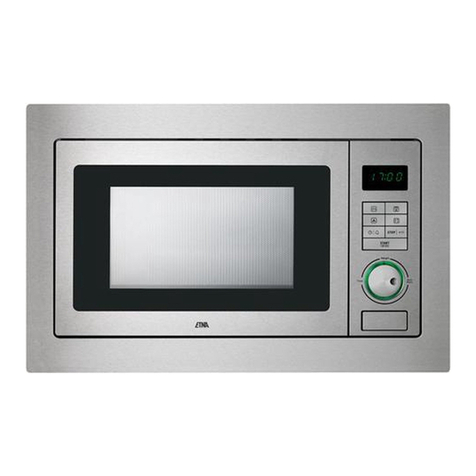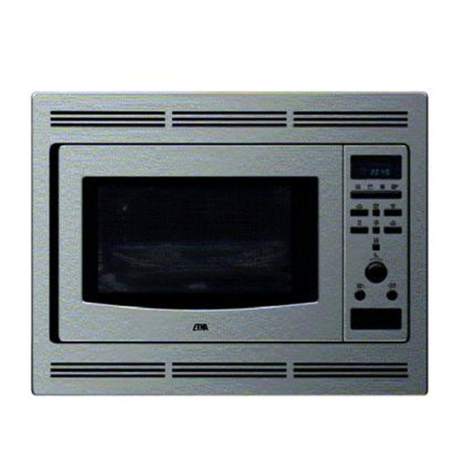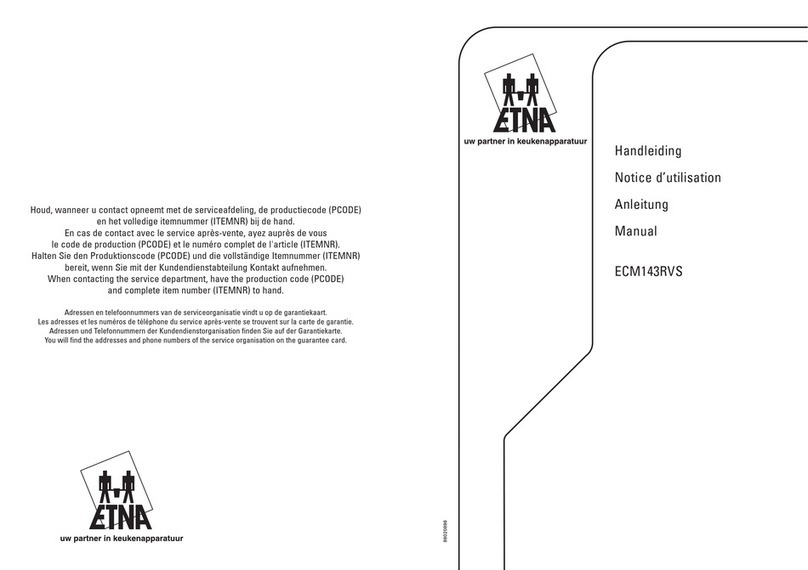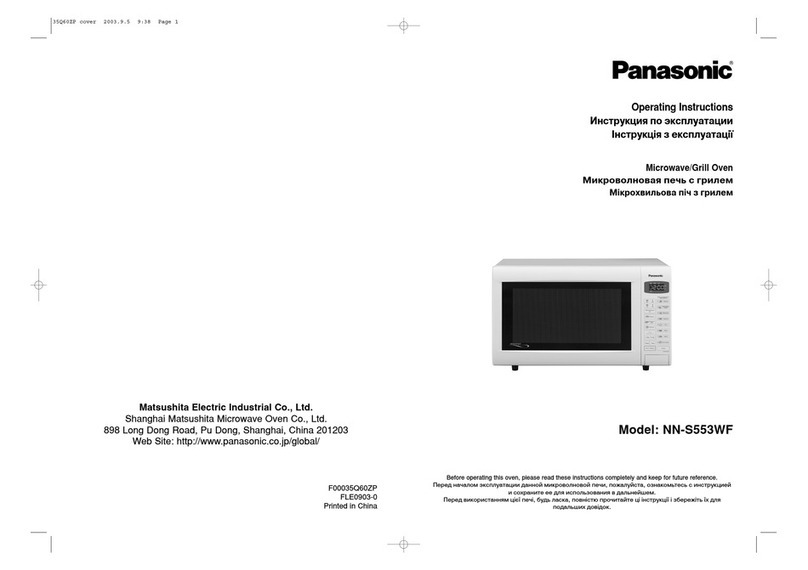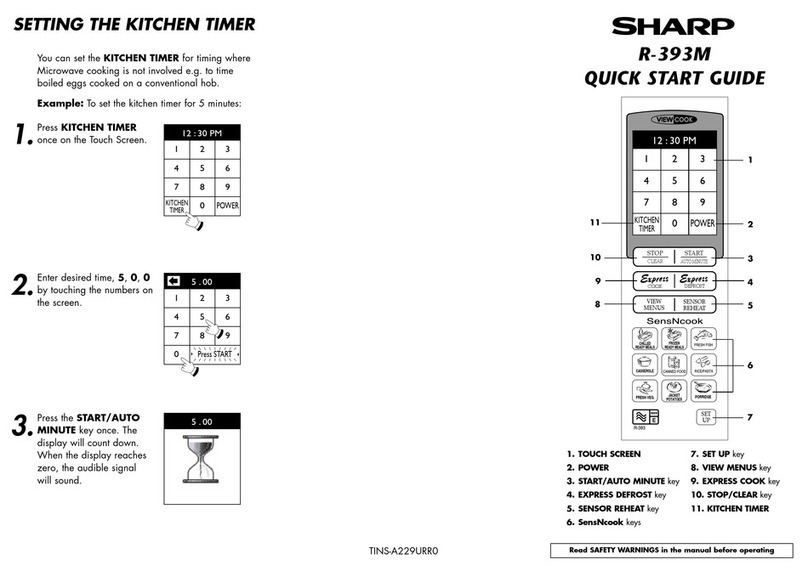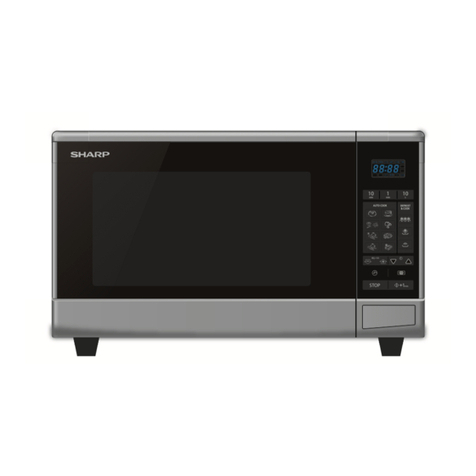
EN 10
Please note!
Warning!
Heating liquids in the microwave can result in delayed boiling. This means that the
liquid may start to boil furiously after it is removed from the microwave, with the risk
of scalding. You can offset the delayed boiling effect by placing a plastic or glass spoon
in the liquid prior to heating it in the microwave.
Warning!
Take care with baby food:
• Shake or stir the content of babies’ bottles or pots of baby food after heating.
• Check the temperature of the food carefully prior to consumption to prevent
scalding injuries.
Warning!
Cutlery and tableware may become hot after using the microwave.
Using the microwave
1. Connect the microwave to the mains.
▷Ensure that the time dial is on ‘0’.
2. Press the door release button to open the door.
3. Place the dish in the microwave and close the door.
4. Turn the control dial to set the desired power.
5. Turn the time dial to set the desired cooking time.
▷If you want to set a time of less than 2 minutes, first turn the dial past 2 minutes
and then turn back to the desired time.
6. The microwave switches on directly after setting the time.
▷You can open the door while the microwave is operating; the microwave will then stop.
The fan will continue to run; this is normal. The microwave will continue when the
door is closed.
7. Once the set time has expired, you will hear a bell sound and the microwave will switch off.
▷If you remove the food from the microwave before the set time has expired, make sure
that the time dial is returned to the ‘0’ position.
OPERATION
